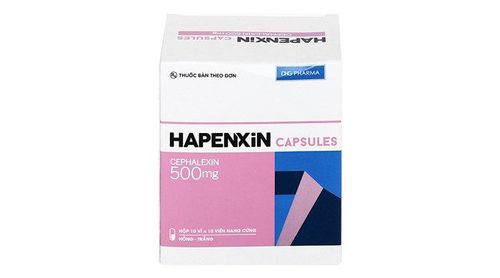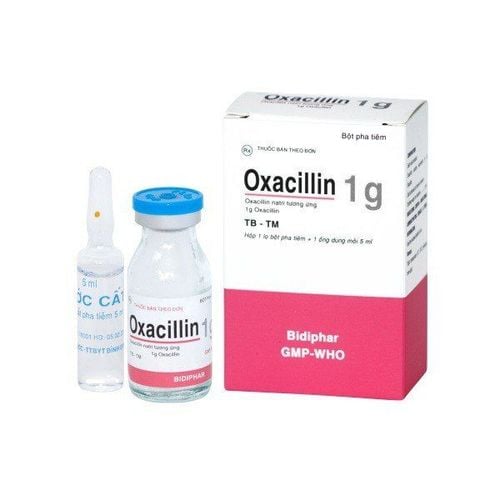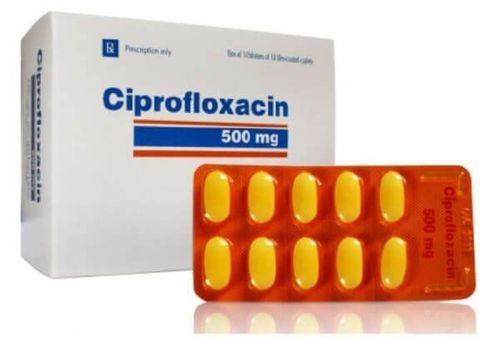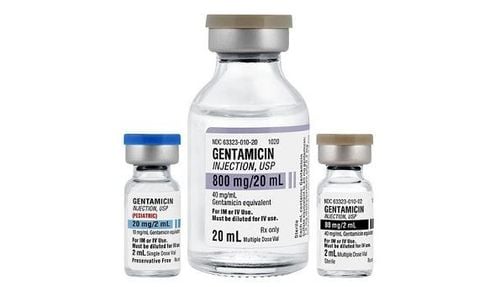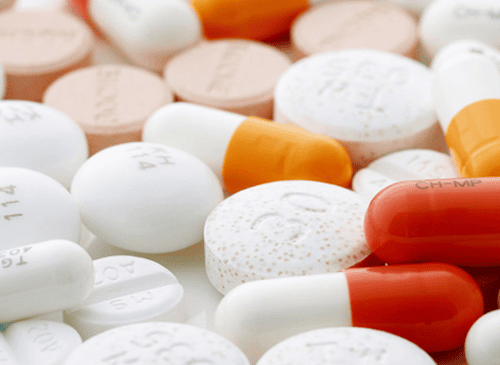This is an automatically translated article.
Auclanityl 562 5mg drug belongs to the group of antibiotics with the composition of amoxicillin 500mg along with clavulanic acid 62.5mg often used to treat bacterial infections such as bronchitis, pneumonia, pyelonephritis or sepsis.
1. What is Auclanityl?
Auclanityl drug with main ingredient amoxicillin is aminopenicillin group antibiotic with broad antibacterial spectrum, stable in acid environment. Amoxicillin has a bactericidal effect by inhibiting the biosynthesis of mucopeptides in the bacterial cell wall. Amoxicillin is active against most gram-negative and gram-positive bacteria such as streptococci, non-penicillinase-producing staphylococci, H. influenzae, Diplococcus pneumoniae, N. gonorrhoeae, E.coli and proteus mirabilis. In addition, Auclanityl contains clavulanic acid, a beta-lactam ring that is structurally linked in an irreversible fashion to beta-lactamases, preventing them from inactivating some beta-lactam antibiotics. Clavulanic acid prevents Amoxicillin from being destroyed by beta-lactamases and effectively extends the antibacterial spectrum of amoxicillin to many bacteria normally resistant to amoxicillin. It is because of this combination that Auclanityl is often indicated in the following cases:
Bronchitis, pneumonia, pleurisy, lung abscess Tonsillitis, sinusitis, otitis media, Cystitis, urinary tract infection pyelonephritis, pyelonephritis, septic abortion, postpartum infection, broad tendonitis, boils, cellulitis, wound infection, intra-abdominal infection, osteomyelitis, sepsis, postoperative infection Resistance Some contraindications to Auclanityl include:
Patients with a history of penicillin hypersensitivity Increased infectious mononucleosis Patients with a history of cholestatic jaundice and liver dysfunction due to use penicillin
2. Dosage of the drug Auclanityl
Depending on the subjects and treatment goals, the dosage of Auclanityl will be different, specifically as follows:
For adults and children > 12 years old:
Mild and moderate infections: 1 tablet (500 mg amoxicillin) every 12 hours / time Severe infections: 1 tablet (500 mg amoxicillin) every 8 hours For children 6 years of age and weighing < 25 kg: Should be treated as a suspension or as a tablet. Patients should take the drug at the beginning of a meal to minimize drug intolerance in the gastrointestinal tract. Antibiotic treatment should not exceed 14 days without re-examination.
Patients with renal failure with a creatinine clearance of 10-30 ml/min can take 1⁄2-1 tablet every 12 hours.
It should be noted: The above drug dosage is for reference only, users need to strictly follow the instructions and dosage prescribed by the doctor.
3. Auclanityl side effects
In some patients when using Auclanityl medicine may experience rare side effects. However, the side effects are mostly mild and temporary such as:
Hypersensitivity reactions: skin rash, pruritus, urticaria Stevens-Johnson syndrome Toxic skin necrosis, bullous dermatitis, exfoliative and pustular pustules Acute systemic skin Quincke's edema Interstitial nephritis Nausea, vomiting and diarrhea, intestinal candidiasis, antibiotic-associated colitis (both pseudomembranous and hemorrhagic) Jaundice hepatitis Hepatitis Leukopenia, thrombocytopenia Transient Hyperactivity, dizziness and convulsions
4. Be careful when using Auclanityl
Some general precautions when using Auclanityl include:
Be careful with patients' hypersensitivity reactions to penicillins, cephalosporins or other beta-lactams before starting treatment with Auclanityl, because there have been Severe, sometimes fatal, hypersensitivity reactions have been reported in patients treated with penicillin. Auclanityl is not suitable for use in patients at high risk for decreased sensitivity or resistance to beta-lactam antibiotics that are not mediated by beta-lactamases susceptible to inhibition by clavulanic acid. Should not be used to treat penicillin-resistant S. pneumoniae. Convulsions may occur in patients with impaired renal function or when high doses are being used. Avoid use if infectious mononucleosis is suspected because of the presence of a measles-like rash associated with Later when taking Amoxicillin Prolonged use of Auclanityl may cause proliferation of non-susceptible organisms At the start of treatment if a rash appears with large pustules, it may be a symptom of a generalized purulent rash. Acute illness requires discontinuation of the drug and is contraindicated Amoxicillin When using Auclanityl, periodically check hematological indicators, liver and kidney function throughout the course of treatment.
5. Auclanityl drug interactions
Possible drug interactions with Auclanityl include:
Auclanityl can cause prolongation of blood clotting time and bleeding, so care should be taken in patients being treated with anticoagulants such as warfarin. Nifedipine increases the absorption of amoxicillin Patients with hyperuricemia when taking allopurinol with amoxicillin will increase the possibility of amoxicillin rash There may be antagonism between amoxicillin bactericides and bacteriostatic agents such as fusidic acid, chloramphenicol, tetracycline The drug can reduce the effectiveness of oral contraceptives, so it is necessary to inform the patient so that contraception can be adjusted. Concomitant use of Probenecid reduces renal excretion of amoxicillin and increases blood levels of amoxicillin. Auclanityl 562 5mg belongs to the group of antibiotics commonly used to treat bacterial infections such as bronchitis, pneumonia, pyelonephritis or sepsis. Patients need to take the medicine exactly as directed to ensure its effectiveness and avoid unwanted side effects.
Follow Vinmec International General Hospital website to get more health, nutrition and beauty information to protect the health of yourself and your loved ones in your family.
Please dial HOTLINE for more information or register for an appointment HERE. Download MyVinmec app to make appointments faster and to manage your bookings easily.




